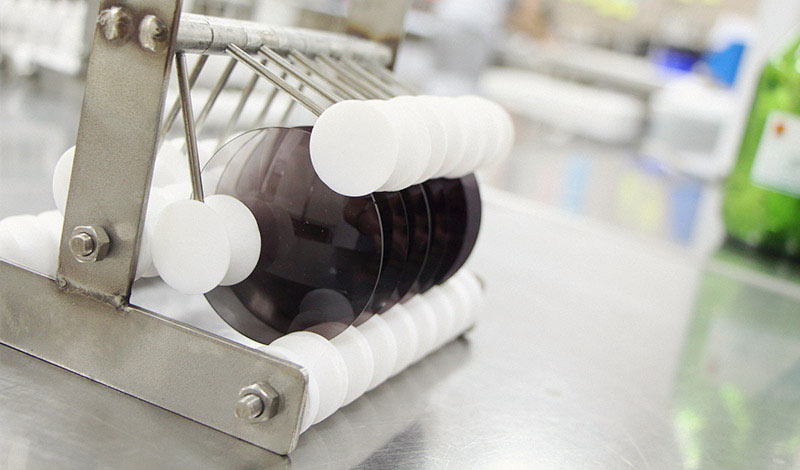
Posted on
Take advantage of:
- Reduced cost of ownership
- Long mean time between maintenance (MTBM)
- Higher ROI & throughput
With ion assisted deposition (IAD, sometimes also called ion beam assisted deposition), you can achieve performance similar to ion beam sputtering (IBS, also known as IBD, for ion beam deposition) but at a lower total cost of ownership and with higher returns on your investment. IAD allows you to create denser films with less scatter than you can with evaporative deposition only, producing high-quality and defect-free films that are low stress and environmentally stable.
Understanding the Different Types of Deposition
Evaporative deposition techniques such as e-beam and thermal evaporation are simple and widely popular, covering a wide range of wavelengths at a reasonable cost, but with lower film quality. IBS offers excellent film stability, durability and precision, but at a higher cost and a lower throughput.
IAD offers a solid middle ground, with fair mechanical durability and precision, all at a lower cost and higher throughput than ion beam sputtering. Unlike evaporation, IAD doesn’t require heating of the substrate, allowing for a broader choice of materials. It does, however, create higher scatter and loss compared to IBD.1
How IAD Works
IAD is a variation of standard e-beam technology that adds a high-energy ion beam directed at the substrate. The ions released by this beam make the evaporated film more dense. The higher-density coating results in greater moisture resistance (better environmental stability), better mechanical durability, and lower scatter. In addition, the ion beam can also be used for pre-cleaning or to etch the substrate.
With IAD, you can achieve:
- Independent control of ion current density and ion energy to optimize film properties
- Long-term operation with 100% O2 or N2 reactive gases for stable operation with no process drift for extended runs
IAD Uses
IAD is perfect for demanding optical applications that require high quality and control. Since the ion assisted deposition process doesn’t require as much heat as other thin film deposition methods, it allows for the coating of plastic materials such as polycarbonate lenses.
Ready to learn more? Download our infographic, The 5 Major Benefits of IAD. And, keep an eye out for our next post, which will dive deeper into the benefits of IAD and take a look at RF versus DC sources – which is better?